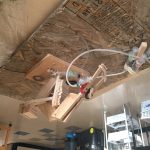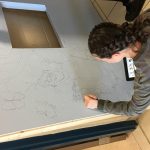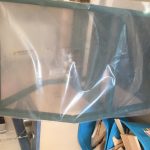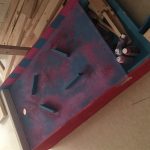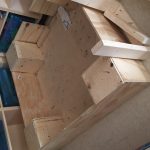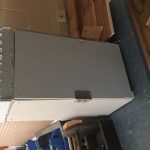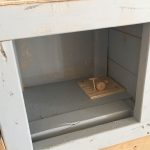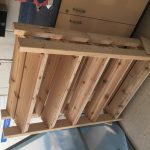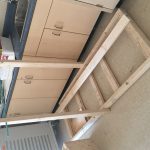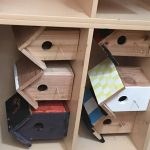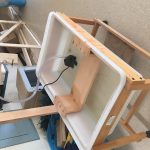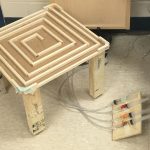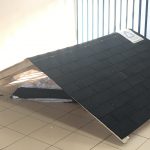STEM, and by extension STEAM, have become increasingly popular over the past few years with a lot of emphasis on creating design tasks that are current, innovative and relevant. With our ever-changing economy, skills and concepts learned within a problem-solving approach to science, tech, engineering, art and math will have tremendous benefit for our learners going forward. In order to best make use of this approach, it is incumbent upon the lead learners (teachers) to ensure that the science, technology, engineering, art and math required within design challenges be rigorous enough to warrant considerable time and resources for time with students is precious and must be efficient and productive. In many instances, a rush to design interesting tasks has come at the expense of rigorous learning. It is our goal that our inquiry will lead us to strategies, resources and tools that will allow us to create productive STEAM programming for our students. It is our hope that STREAM (Science, Technology, Rigour, Engineering, Arts, Math) will be the new normal at our school and beyond for this approach to learning.
Team Members
Ryan Tackaberry
Peel District School Board
Brad Murray
Peel District School Board
Tanya Korostil
Peel District School Board
Jeff Fraser
Peel District School Board
Professional Learning Goals
We learned to create design challenges that involve rigorous science, technology, engineering, art and math and explore our theory of action: If we provide our students resources and rich design challenges to engage students in rigorous learning opportunities, then our students will be empowered 21st century learners who optimize learning through an inquiry-based approach.
Activities and Resources
We conducted a book talk using the mentioned professional resources to deepen our understanding of inquiry-based learning and strategies to conduct productive STEAM classes for our Grade 7 and 8 students. The lead teachers met on a weekly basis to reflect on our professional inquiry with an emphasis on determining successes to repeat, challenges to rethink, and unproductive elements to remove. Additionally, we used release time to plan for effective instruction and to visit a school in our area with a promising STEAM program. Additionally, we invited teachers from a local school to share in our learning and to collaborate to make programming stronger.
Unexpected Challenges
Integrating Expectations: We found it difficult to integrate rigorous science, technology, engineering, arts and math with so few big projects. A lot of planning and extra mini-projects were required to ensure that expectations were met.
Non-Core Teaching: We had the students for an 80-minute block once per week and that was the only time that we saw them. Therefore, we were not able to capitalize on some of the wonderful inquiry questions that made themselves visible during the student explorations.
Time: When we designed the project descriptions, we intentionally designed big projects in hopes that the students would get through them in a couple of months. It turns out that they took much longer than we had anticipated and they ended up taking the better part of the whole year.
Administration: Due to a promotion received by the lead teacher and accompanying professional development lead by the board and ministry, the administration withdrew support for release time for this project. This made it somewhat difficult to proactively plan for learning in the class with other team members.
Size and Scope of Projects: The size of the projects made it so that science, technology, engineering, arts and mathematics were done more in phases than consistently throughout the project. For example, much of the art expectations associated with the project were designed in the initial phase and then implemented as the last step in the projects. In some cases, there was extended periods of time where the students were not integrating art into their projects.
Resource Challenges: Board policies for purchasing inhibit the purchase of quality tools and resources. For example, tools purchased by the school for the programme had little power and easily broken.
Costs of Mistakes: We entered the program very willing to let the kids fail and learn from their mistakes. However, we learned quickly that we needed to balance this with the cost of these mistakes. For example, measurement errors before cutting could cause the loss of expensive wood materials. Mini-lessons were put in place to address this, but waste was something that was an ongoing area of concern.
Materials Management: The STAC room is a shared space by all educators in the building. In part, because of our programme, many teachers took advantage of the use. However, this often caused tools and materials to be misplaced. Several steps were needed to be taken so that all teachers and students could find the tools and materials required to complete the job at hand.
Mentee/Mentor: The assigned mentor was positive and offered good suggestions. However, the mentor was slow to respond to queries which at some points held up progress on the project.
Enhancing Student Learning and Development
Student Voice and Choice: The design challenges were designed with student voice and choice in mind. Open tasks were used so that students could negotiate their own projects and interpret the curriculum in a way that made sense to them. Because of the complexity of the options, there was a lot of opportunity for meeting the students where they were.
Assessment: The success criteria for the tasks was clearly communicated for science, tech, math and the arts and designed in a way to allow entry points for a range of learners.
Links: Students were able to make many connections between strands within science and math and connections between school and the real world. By designing challenges that were related to real-world problems, students were able to see the necessity of what they were learning at school.
Sharing
Our plan: Our hope is that STEAM spreads organically across our own school and through our cluster of schools. Successes and challenges will be documented through social media sites such as Twitter and school blogs. Additionally, staff will participate in and have opportunities to interact with STEAM design challenges at staff meetings. In addition, all staff in our school has access to our STAC room for their own classes which will allow them opportunity to use an ideal learning environment with shared resources to support a STEAM classroom. Included in the room will be ready-made design challenges appropriate for each division. The two lead teachers will apply to present our learning at the Peel District School Board’s “Arts Alive Conference” in the spring.
In School: Projects were displayed throughout the hallway closest to our STAC room in the school to garner attention to rigorous design challenges. Many informal discussions happened throughout the school and bookings for our STAC room picked up. Additionally, time was allocated and presentation time granted during staff meetings for teachers to interact with the space and come to an understanding of the usefulness of rigorous design challenges. Student blogs of their progress were created to share the learning process with other students and blogs were highlighted to staff during staff meetings. Students were offered to voluntarily share their projects in a “Genius Hour Celebration” evening in early June. Many have accepted the offer.
Family of Schools: An invitation was given and accepted to a local school in our area. A lead teacher from the other school was invited for a day to come to our school with two main objectives: share in learning from this past school year and to forward plan integration of programming between the two schools moving into next year. Because of the close proximity of the schools, an opportunity has presented itself to have the students from both schools work together next year. Principal teams from our school has shared some of the learning that has happened with his principal colleagues from other schools in our family of schools.
Board: Due to a scheduling conflict, our team was not able to share at the board run arts conference. However, the lead teacher of the project has meetings planned with the science, arts, tech and math co-ordinators to share the learning with hopes that pilot projects can be implemented at different schools in the board.
Project Evaluation
Our success criteria:
- We can create design challenges that demonstrate clear links to the curriculum.
- We can assess multiple subject areas while our students are engaged in design challenges.
- Our students demonstrate qualities of empowered modern learners.
- We can respond to learners in the moment with carefully planned resources.
Criteria 1: Using different professional resources, we were able to create design challenges that both the educators and the students understood had clear links to the curriculum (e.g., students learned real-life applications of bisectors in designing and creating trusses for a roof structure of a playhouse). But realistically, other connections were tenuous at best and not all expectations were at the targeted grade level. Given the circumstance that the participating teachers were not also the core teachers for the students, delving deeply into the expectations and fully integrating learning and making rich connections was a challenge.
Criteria 2: We were, with some success, able to assess science and technology, math and the arts. Anecdotals were shared with the core teachers with the responsibility of reporting and evaluating visual arts the responsibility of the team. A format where the core teacher leads the class in these design challenges would enrich the ability to make strong connections and assessment.
Criteria 3: Students negotiated the tasks, were empowered by understanding the assessment and evaluation, and were provided the tools to complete the tasks. Projects involved moment-to-moment problem-solving, students were encouraged to innovate, and students collaborated on big projects. This criteria might have been our biggest success.
Criteria 4: This criteria got better over the course of the school year. Tools needed for jobs were not immediately available and, as such, students were asked to problem solve, but other times, projects were delayed because the right resource was not available. Much of the professional sharing with the other schools included briefing on all the learning from the organization and availability of tools are resources necessary for the successful completion of the projects.
Overall, this project has had a tremendous impact of teaching and learning at our school. Having the ability to collaborate regularly through planning and co-teaching with another educator allowed for tremendous growth in each of the team members. The students thrived with engaging projects and were given opportunities to participate in design challenges that they might never have the opportunity to participate in otherwise. Using an inquiry stance in class allowed the educators to meet the students where they were in their learning and allowed the students to make connections from learning in other areas of the curriculum to their project.
Resources Used
STEAM Makers: Fostering Creativity and Innovation in the Elementary Classroom by Jacie Maslyk
IQ: A Practical Guide to Inquiry-Based Learning by Jennifer Watt and Jill Colyer
The STEAM Journal: http://scholarship.claremont.edu/steam/
Resources Created
These resources will open in your browser in a new tab, or be downloaded to your computer.


